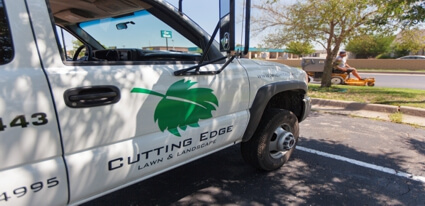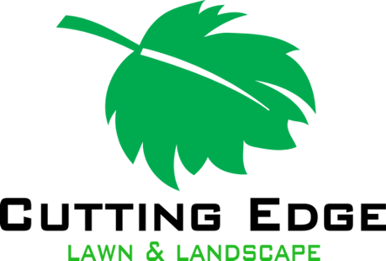
Introduction: A lush, green lawn is the envy of every homeowner. To achieve and maintain a healthy lawn, you must follow the best lawn care practices. One of the key aspects of optimal lawn health is knowing when to aerate and de-thatch your lawn. In this blog post, we will discuss the best time to aerate and de-thatch your lawn, as well as the benefits and considerations you need to keep in mind. So, let’s dive in and learn how to keep your lawn in tip-top shape all year round.
Table of Contents:
- Understanding Lawn Aeration and De-Thatching
- Why Timing Matters
- Best Time for Lawn Aeration
- Best Time for Lawn De-Thatching
- Climate Considerations
- Soil Moisture and Compaction
- Lawn Care Calendar for Aeration and De-Thatching
- Aeration and De-Thatching Equipment Options
- Conclusion
Understanding Lawn Aeration and De-Thatching:
Lawn aeration involves creating small holes in the soil to allow air, water, and nutrients to penetrate the grass roots. This helps alleviate soil compaction, which can lead to poor root growth and unhealthy lawns. There are different types of aeration methods, including spike and core aeration, as well as liquid aeration products.
De-thatching, on the other hand, involves removing the layer of dead grass and organic matter (thatch) that builds up between the soil and the grass blades. Thatch buildup can block water and nutrients from reaching the roots, leading to a weak and unhealthy lawn. De-thatching can be done manually using a thatching rake or with a power rake or vertical mower.
Why Timing Matters:
The best time to aerate and de-thatch your lawn is crucial for optimal lawn health. Performing these tasks at the right time ensures minimal stress on the grass and allows for quick recovery and growth. It also prevents potential damage to the lawn, which can result from performing these tasks at an inappropriate time. Furthermore, aeration and de-thatching performed at the right time can maximize the efficiency of water and nutrient absorption, leading to a stronger, more vibrant lawn.
Best Time for Lawn Aeration:
The ideal time to aerate your lawn depends on the type of grass you have. For cool-season grasses, such as Kentucky bluegrass, fescue, and ryegrass, the best time to aerate is during the early fall or spring when the grass is actively growing. This allows the grass to recover quickly and take advantage of the increased access to air, water, and nutrients.
For warm-season grasses like Bermuda, Zoysia, and St. Augustine, the optimal time for aeration is during late spring to early summer when these grasses are in their peak growing season. Aerating during this time will help your warm-season grass thrive in the hot summer months.
Best Time for Lawn De-Thatching:
De-thatching is best done when the grass is actively growing and can recover quickly. For cool-season grasses, the ideal time is early fall or spring when the grass is actively growing, and soil temperatures are moderate. This allows the grass to bounce back from the stress of de-thatching and promotes new growth.
For warm-season grasses, perform de-thatching during late spring or early summer when the grass is in its active growing phase. This timing ensures that your warm-season grass can recover and strengthen before the heat of summer sets in.
Climate Considerations:
Climate plays an essential role in determining the best time for aeration and de-thatching. In areas with milder climates, you may have more flexibility in scheduling these tasks. However, in regions with extreme temperatures or significant seasonal changes, you’ll need to adhere to the recommended lawn care calendar more strictly.
For instance, if you live in an area with harsh winters, it’s crucial to aerate and de-thatch before the ground freezes to ensure your lawn can recover before the cold weather sets in. In contrast, those living in hot, dry climates should avoid aerating and de-thatching during the peak of summer to prevent further stress on the lawn.
Soil Moisture and Compaction:
Before you aerate or de-thatch your lawn, consider the soil moisture and compaction levels. Soil should be moist but not saturated, as overly wet or dry soil can hinder the process and damage the lawn. To check soil moisture, perform the screwdriver test: if you can easily push a screwdriver 4-6 inches into the soil, the moisture level is suitable for aeration and de-thatching.
Additionally, assess the level of compaction in your lawn. If you notice water pooling or your lawn feels hard underfoot, it’s likely that your soil is compacted and would benefit from aeration.
Lawn Care Calendar for Aeration and De-Thatching:
To make it easier to remember when to aerate and de-thatch your lawn, create a lawn care calendar with the best times for these tasks based on your grass type, climate, and soil conditions. This will help you stay on track and ensure your lawn remains healthy throughout the year.
For example, you can set reminders in your calendar to check soil moisture and compaction levels, as well as to monitor thatch buildup. By staying proactive with your lawn care, you can address any issues before they become problematic.
Aeration and De-Thatching Equipment Options:
Choosing the right equipment for aeration and de-thatching is crucial to effectively perform these tasks. For aeration, you can use a manual spike aerator, a plug (core) aerator, or even a liquid aerator product. Each method has its benefits, with core aeration being the most effective at alleviating compaction.
For de-thatching, you can use a manual thatching rake for smaller lawns, while a power rake or vertical mower is more suitable for larger areas. These machines can be rented from local garden centers or home improvement stores if you don’t want to invest in purchasing them. Or better yet, just give us a call.
Conclusion:
Knowing the best time to aerate and de-thatch your lawn is essential for maintaining optimal lawn health. By following the recommended schedule based on grass type, climate, and soil conditions, you can keep your lawn looking lush and vibrant all year round. So, grab your lawn care calendar and start planning for aeration and de-thatching to keep your lawn in top condition.
Remember, following proper lawn care practices, including aeration and de-thatching at the right time, will not only improve the appearance of your lawn but also promote better root growth, water and nutrient absorption, and overall lawn health. With careful planning and attention to detail, you’ll soon be enjoying a lush, green lawn that’s the envy of the neighborhood. Happy gardening!
10 Most Common Questions on Aeration and De-Thatching
-
- What is the difference between lawn aeration and de-thatching?Lawn aeration involves creating small holes in the soil to allow air, water, and nutrients to penetrate the grass roots, helping to alleviate soil compaction. De-thatching is the process of removing the layer of dead grass and organic matter (thatch) that accumulates between the soil and the grass blades, promoting better water and nutrient absorption.
- How often should I aerate and de-thatch my lawn?The frequency of aeration and de-thatching depends on your grass type, climate, and soil conditions. Generally, lawns with heavy clay soil or high foot traffic should be aerated once a year. De-thatching is typically needed when thatch buildup exceeds 0.5 inches in thickness. This can range from once a year to once every few years, depending on your lawn’s specific needs.
- Can I aerate and de-thatch my lawn at the same time?Yes, you can aerate and de-thatch your lawn during the same lawn care session. However, it’s essential to perform both tasks when the grass is actively growing and can recover quickly.
- What equipment do I need for aeration and de-thatching?For aeration, you can use a spike aerator, a plug (core) aerator, or a liquid aerator. For de-thatching, you can use a thatching rake, a power rake, or a vertical mower. Rental equipment is also available if you don’t want to invest in purchasing these tools.
- Can I overseed my lawn after aeration and de-thatching?Yes, overseeding after aeration and de-thatching is an excellent idea, as the processes create ideal conditions for seed germination and establishment. Make sure to choose the right grass seed for your lawn and follow proper overseeding guidelines.
- How long does it take for a lawn to recover after aeration and de-thatching?Lawn recovery time depends on the grass type, growing conditions, and how well the lawn is maintained. Generally, you can expect your lawn to recover within 2-4 weeks after aeration and de-thatching.
- Do I need to remove the soil cores and thatch debris after aeration and de-thatching?After aeration, you can leave the soil cores on the lawn as they break down and return nutrients to the soil. However, after de-thatching, you should remove and dispose of the thatch debris or use it for composting.
- What are the benefits of aeration and de-thatching for my lawn?Aeration and de-thatching promote better water and nutrient absorption, encourage deeper root growth, reduce soil compaction, and help prevent lawn diseases and pests. These processes lead to a healthier, more vibrant lawn.
- Can I aerate and de-thatch a newly seeded or sodded lawn?You should wait until the new grass is well-established before aerating or de-thatching. Typically, this means waiting at least one growing season for seeded lawns and 3-4 months for sodded lawns.
- Are there any alternatives to traditional aeration and de-thatching methods?
Liquid aeration products can be used as an alternative to mechanical aeration methods. These products break down soil compaction by increasing microbial activity in the soil. For de-thatching, maintaining proper lawn care practices, such as mowing at the correct height and avoiding over-watering, can help reduce thatch buildup without the need for mechanical de-thatching.


